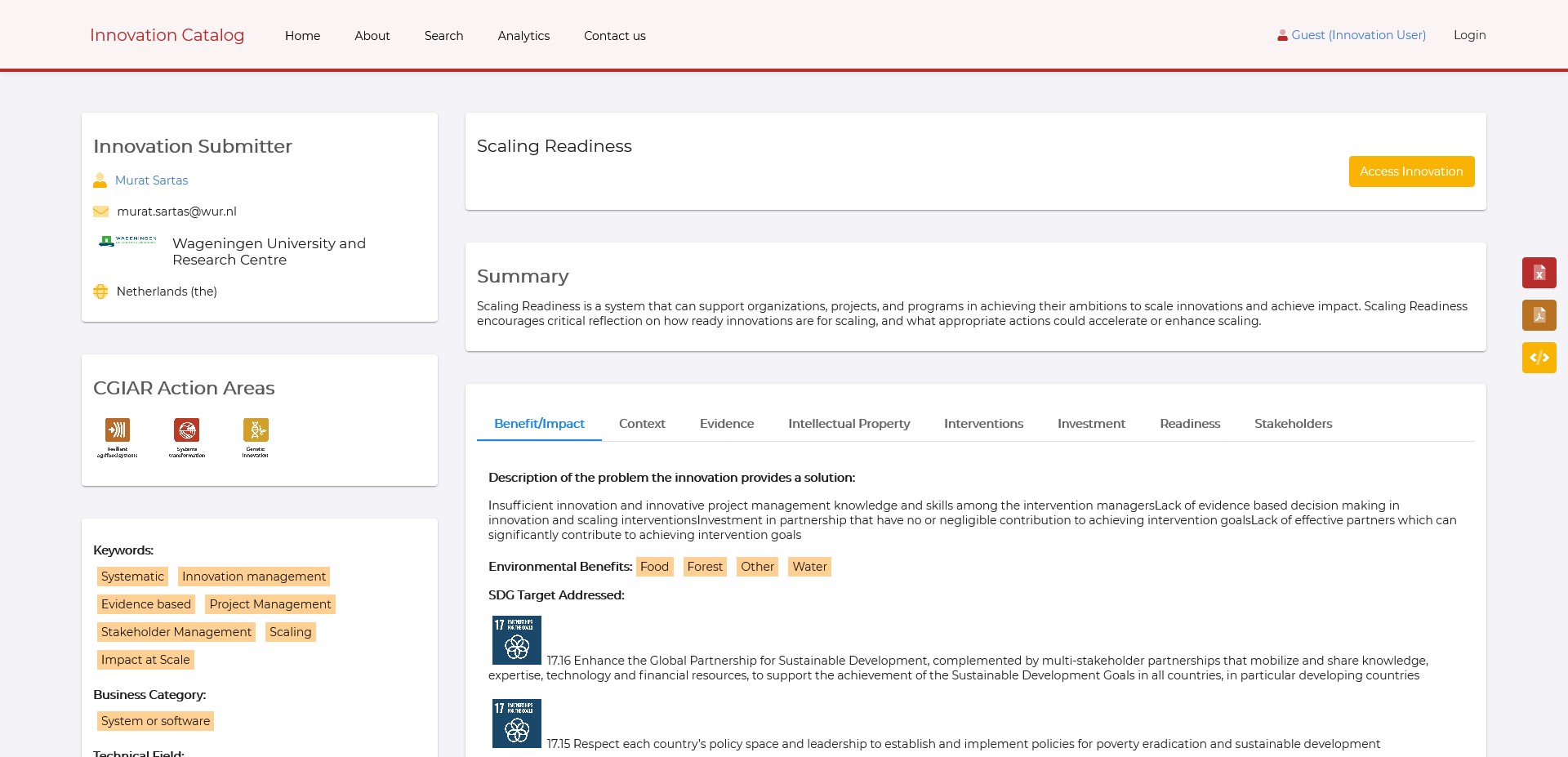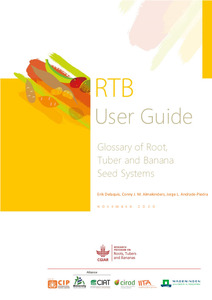Information gap
One of the challenges for research for development organizations is to ensure their innovations are properly documented and findable by public and private partners. If the innovations that research organizations have designed, tested and validated are to contribute to the Sustainable Development Goals, they must be available to businesses and governments for further adaptation and embedding into business and public policy strategies. Only then, can we achieve impact at scale.
There is a clear gap between the research and development side of innovation. Scientists are often unaware of the specific needs of the clients they serve including governments, the private sector and farmers as they develop their solutions. As a result, they may struggle to find users. On the other side of this information divide, large-scale delivery or scaling partners have a problem as they are often unaware of, or do not have access to, knowledge or information on state-of-the-art innovations. This creates a strategic gap and missed opportunities for co-investment and collaboration. The CGIAR Research Program for Roots, Tubers and Bananas (RTB) has embraced this challenge and has developed a comprehensive Innovation Catalog.

Bridging research and impact
To achieve the Sustainable Development Goals, it is essential that research organizations (supply), development partners (demand) and impact investors (funders) can “find” each other. For such matchmaking to occur, easy access to up-to-date information is essential. But what kind of information would different parties be interested in?
“We wanted to get feedback from potential user groups: the general audience, impact investors and innovation project managers,” said Victoria Clarke, a knowledge management research fellow with the Monitoring, Evaluation and Learning team. The interdisciplinary team developing the Innovation Catalog started by mapping out the needs, goals and questions that each group would have when accessing the Catalog. For example, impact investors have a particular interest in knowing (a) Whether the innovation is already available or is still undergoing design and testing, (b) the specific results or objectives an innovation can achieve (e.g. improving income, nutrition, climate adaptation), (c) the required investment for further developing or scaling the innovation, and (d) the geographies and user groups for which the innovation has been proven to work. By comprehensively documenting innovations against such parameters, the Catalog ensures its relevance for the different user groups.

RTB’s online Innovation Catalog allows visitors to use a simple explorer and search tool that can be customized to browse innovations and receive details on those of particular interest quickly and easily. “User-friendliness was an important factor in our testing,” explained Clarke. “We wanted to ensure that users would find the information in easy-to-understand, the process is intuitive, and the search is adapted to their needs.” Data can easily be exported, and the Innovation Catalog will improve the findability of innovation through the internet with enhanced search engine optimization.


A mock-up of the Innovation Catalog Dashboard
RTB hopes to expand the use of the Catalog across One CGIAR. “CGIAR is undergoing a transition which is largely geared towards ensuring a stronger impact-orientation through partnerships,” says Marc Schut, RTB Flagship Leader on Improved Livelihoods at Scale and Strategic Advisor on Innovation and Scaling to the One CGIAR. “One CGIAR needs to invest in tools and systems that provide a comprehensive overview of its innovation portfolio, the scaling readiness of that portfolio, and how that portfolio is expected to contribute to achieving development goals and impacts.”
Such a system can inform fit-for-purpose partnerships, investment decisions, resource mobilization, and communication. It can also support so-called “stage-gating” whereby evidence informs decisions on which innovation investments to prioritize, pause or stop. The Innovation Catalog can provide a powerful basis for innovation portfolio management in the One CGIAR.
“Having an up-to-date and detailed digital Innovation Catalog is important, but it’s not enough,” says Paolo Sarfatti, the RTB Innovation Catalog lead innovation analyst – coordinator. “It should be seen as a powerful tool or source of information that can inform match-making, discussions, and negotiations between supply and demand in the agricultural innovations landscape.” This may also show where additional investment in innovation is needed that will be valuable to impact investors.
Building on existing databases
The development of the Innovation Catalog started with an analysis of existing online digital resources and databases, including Monitoring, Evaluation and Learning (MEL) platform, Product Platform for Agricultural Solutions (PROPAS), WIPO Green, IFAD Rural Solutions, World Overview of Conservation Approaches and Technologies (WOCAT), Global Information System for PGRFA (GLIS), Global Innovation Exchange, CGIAR 50, CGIAR Big Data Platform, PANORAMA – Solutions for a Healthy Planet and Managing Agricultural Research for Learning and Outcomes (MARLO).
The analysis revealed challenges including non-standardization and the lack of quality assurance of documentation, lack of linkage with the CGIAR monitoring, evaluation and learning system, and limited user-friendliness for wider use that the RTB Innovation Catalog aims to address. The development team identified six key functions of an Innovation Catalog and assessed against the existing online digital resources (see figure). It allowed us to build on existing work and experiences and bring it all together in a comprehensive portal.
In the process of developing and piloting the Innovation Catalog, representatives from the various groups of target users have been involved to ensure the Catalog eventually serves its purpose.
A first version of the Innovation Catalog is expected to go live and launch by the end of 2021.

Analysis of existing databases and platforms against the six key functions of an Innovation Catalog for CGIAR
Credentials
This blog has been prepared by Marc Schut, Enrico Bonaiuti, Victoria Clarke, Paolo Sarfatti, Murat Sartas and Panagiotis Zervas.
If you would like to have more information on the Innovation Catalog or its development journey, please contact Enrico Bonaiuti (E.Bonaiuti@cgiar.org)



